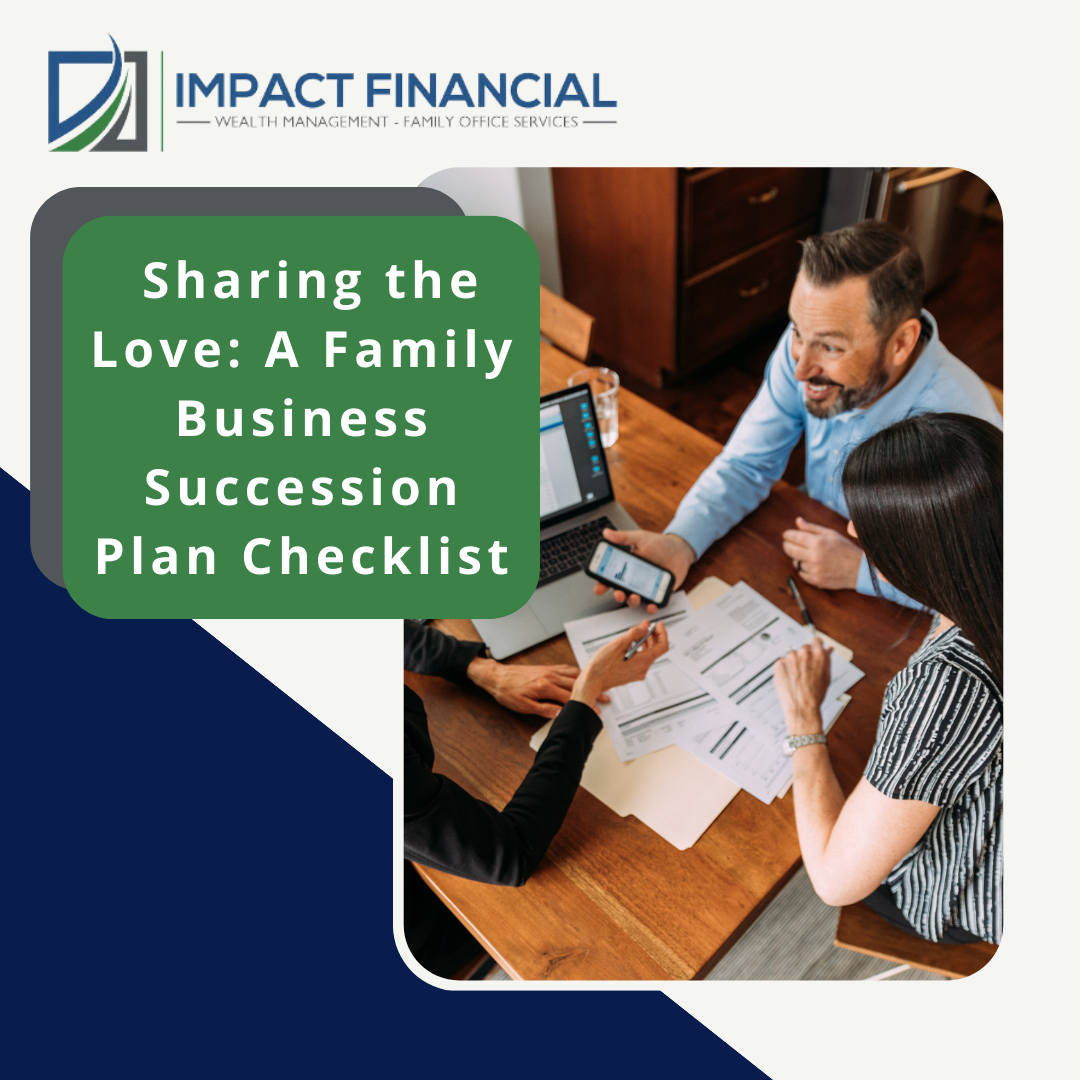Valentine’s Day represents love, but not just for couples. You can also spread the love through sharing your family business succession plan with the loved ones you hope will take over the reins of the company you spent your life building. Here is a seven-step checklist to help you with your succession planning:
1. Creating manageable goals and objectives
The business leader must set goals and design objectives to help smooth the transition and integrate strategies to prepare should unexpected challenges or conflicts arise. Not having established goals and objectives could impact the business owner’s decisions to take action in the business succession, creating hesitation to retire, unnecessary stress, and tension within the family.
2. Filling critical roles and identifying your successors
Have you selected family members that will be trusted with positions of authority to make critical decisions for the company now that you are stepping down? This could be especially crucial if you still have significant wealth tied up in the business.
3. Create a training and development plan
It might be helpful to create a training program for management and staff to match the company’s needs with the family members’ talents and interests in the business. Here are a few things to think about when developing your program:
- Which roles need the most training?
- Online or in-person training?
- Classroom style, workshop, or individual on-the-job training?
- What are your short- and long-term objectives?
- What kind of materials will you need?
- Do you have established goals and metrics to measure progress?
4. Risk mitigation
With anything involving finance and business, there is risk involved. Risk management for a family business succession doesn’t happen overnight. It begins long in advance of when you, as the owner, decide to retire or pursue other activities. A few suggestions for steps to take to help mitigate risk during business succession include:
- Create a manageable plan.
- Choose qualified people for the necessary positions.
- Ensure they receive the training needed and have an understanding of the blueprint for succession.
- Follow the steps you and your financial professional have created that align with your strategy and adhere to a risk management model.
- Be open and transparent with the family members involved in the business succession.
5. Valuation of the business
A business valuation gives an accurate picture of what a company is worth. You can better determine the business’s price if you plan to sell it to a family member or provide them an idea of its value if you are just handing it off to them. Conducting a business valuation is critical for tax planning and estate planning, allowing for a fair distribution of the assets to family members. According to the Family Business Institute, 70% of family-owned businesses fail or are sold before the second generation can even take over. Generally, there are three methods for determining the value of the business:
- Income Approach – This method examines the level of risk and expected economic benefit related to the investment.
- Asset Approach – This method determines the value of the company’s assets less liabilities, tangible and intangible.
- Market Approach – This method compares your company and similar businesses recently sold.
6. Determine your exit strategy
Do you want to retain any control of the business after you pass it off or make a clean break? Have everything in order before you go. Commit to your plan.
7. Consult your financial professional
A family business succession is a big life step and a complex process. It can be exciting, however, many factors can go wrong. To help mitigate unwanted challenges and obstacles, consider consulting a financial professional with experience in business succession planning. Along with attempting to side-step problems, you can potentially save on tax issues that you were unaware of and family conflicts down the road.
Make the transition for yourself and your family as painless as possible by scheduling that meeting with your financial professional and sharing the love of a family business succession plan with your family this Valentine’s Day.
Important Disclosures:
The opinions voiced in this material are for general information only and are not intended to provide specific advice or recommendations for any individual.
This information is not intended to be a substitute for specific individualized tax or legal advice. We suggest that you discuss your specific situation with a qualified tax or legal advisor.
All information is believed to be from reliable sources; however, LPL Financial makes no representation as to its completeness or accuracy.
This article was prepared by LPL Marketing Solutions
Sources:
setting-goals-and-objectives-for-an-effective-family-business-succession-plan-1.pdf (kpmg.com)
Understanding the Role of Business Valuation in Succession Planning (linkedin.com)
How to Create an Employee Training Plan in 10 Steps (sandiego.edu)
Business Exit Strategy: Definition, Examples, Best Types (investopedia.com)
LPL Tracking # 509419


